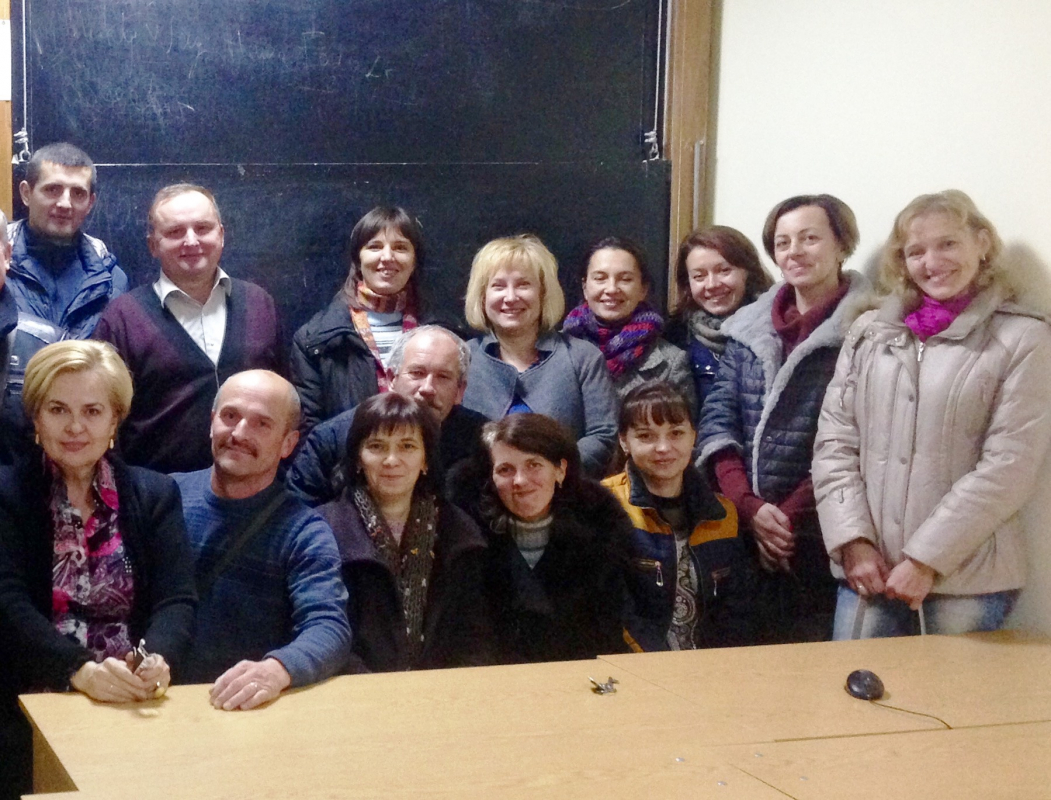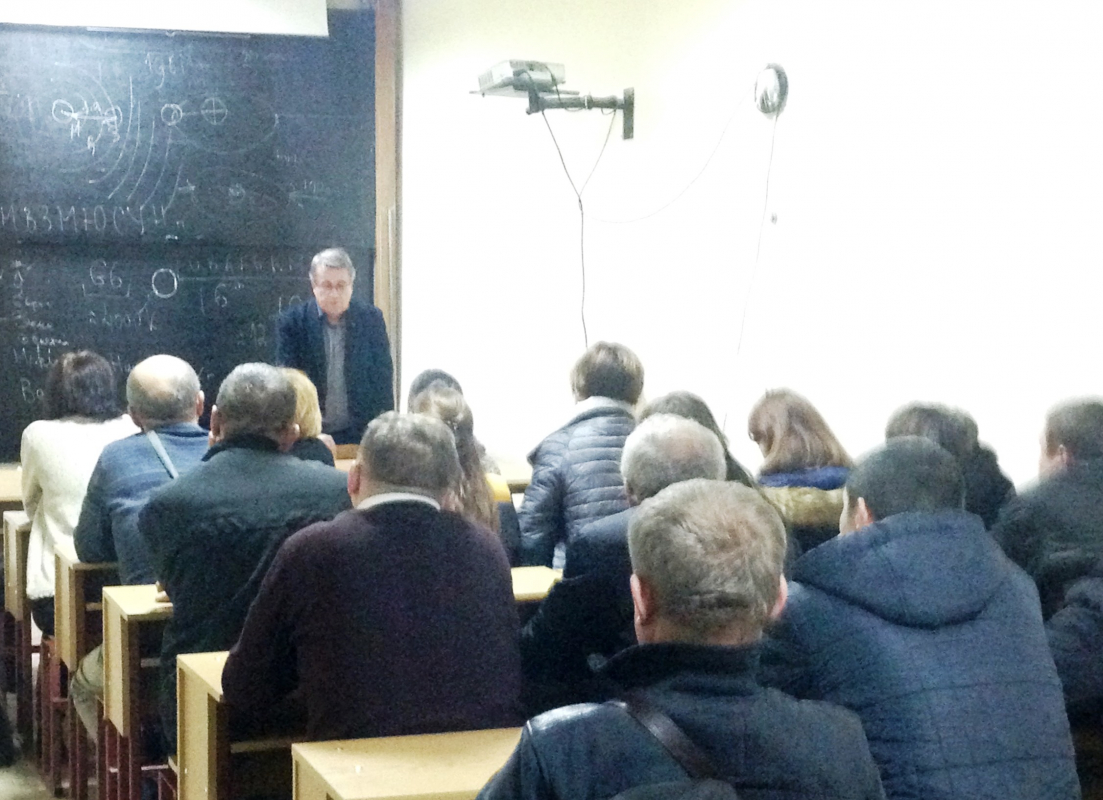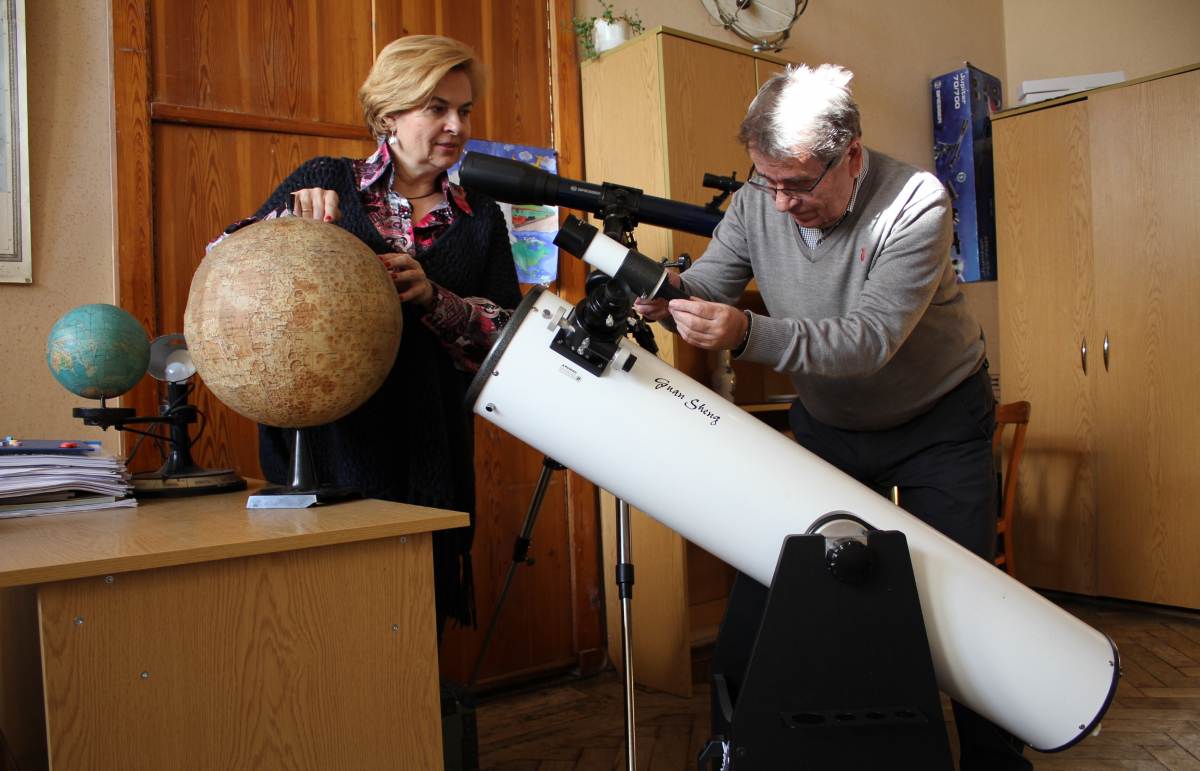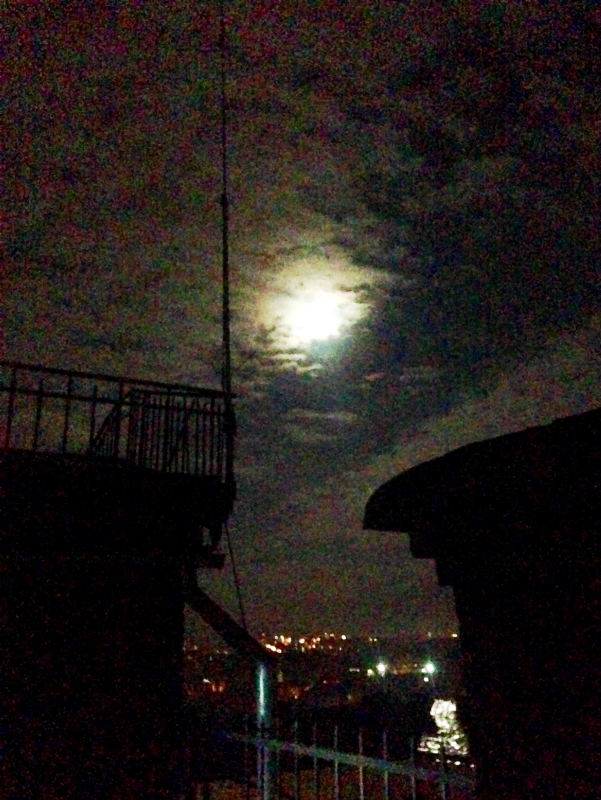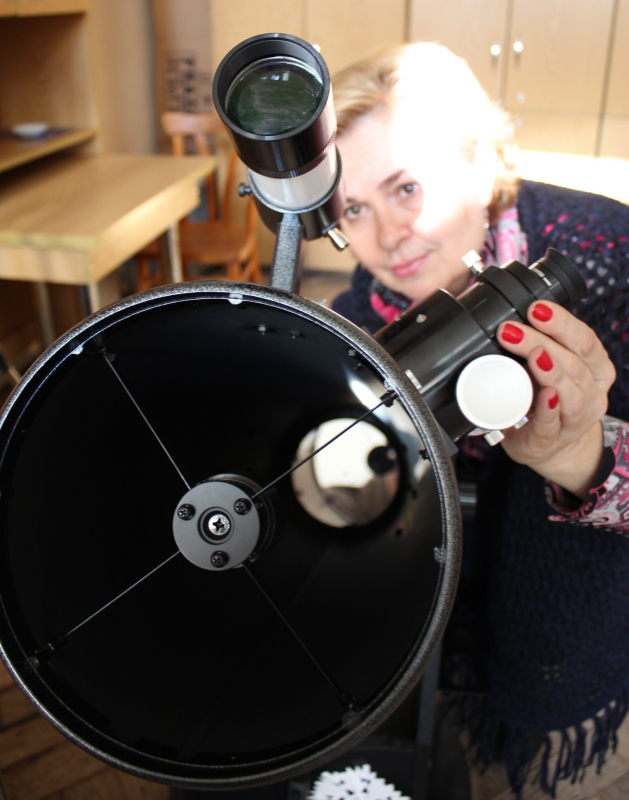Recently, the Institute of Geodesy of Lviv Polytechnic National University conducted the interesting and informative seminar GeoHelioAstrosyndicate that was dedicated to the upcoming 200th anniversary of Lviv Polytechnic.
Opening remarks of the astronomers' scientific meeting were delivered by Professor Natalia Chukhrai, the University Vice Rector of Research. She talked about the significant scientific achievements obtained by the scientists of Lviv Polytechnic throughout its history.
The next one to perform the speech before the audience was Professor Cornelius Tretiak, the director of the Institute of Geodesy, the laureate of Ukrainian State Prize in Science and Technology. He mentioned the important issues about the activity of a new scientific community GeoHelioAstrosyndicate created last year. It consists of not only the academics of Lviv Polytechnic, but also the astronomers of Lviv Ivan Franko National University and other research institutes of NAS of Ukraine that carry out the space researches.
During the seminar Professor Theodore Zablocki, the head of Geodesy and Astronomy Department and Professor Stepan Savchuk, the head of Lviv Polytechnic Observatory presented the results of their researches "The monitoring system of water vapor in Ukraine Western region troposphere." Liybov Yankiv-Vitkovska, the associate Professor of this Department made a speech about "The Earth ionosphere and methods of its accountability during the coordinate tasks."
Among others the scientists of Carpathian Division of the Institute of Geophysics NAS of Ukraine and Aerological Service of Lviv Hydrometeorological service also presented their reports. Gratefully, the students, the young scientists and the post-graduated students actively participated in the discussions of scientific problems.
General information
So called "Big Moon", which is the astronomical phenomenon that occurs only in the case of full moon coincidence with the perigee (the moment of the closest Moon approach to Earth) happened this year on November, 14. The distance between them is reduced from 406 to 356 thousand kilometers. During the big moon its visible disk becomes bigger and brighter than usual. This year the Earth natural satellite will approach our planet to 356 thousand kilometers that is a record number for the last 68 years.
